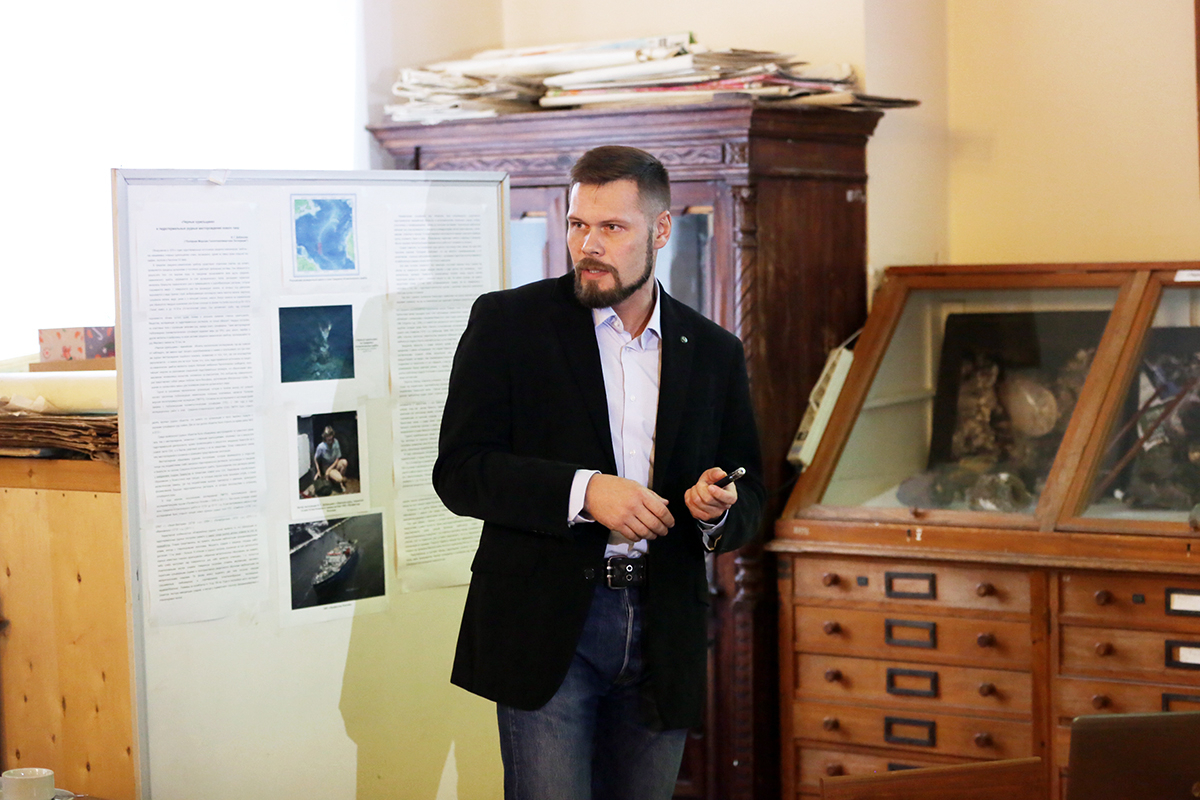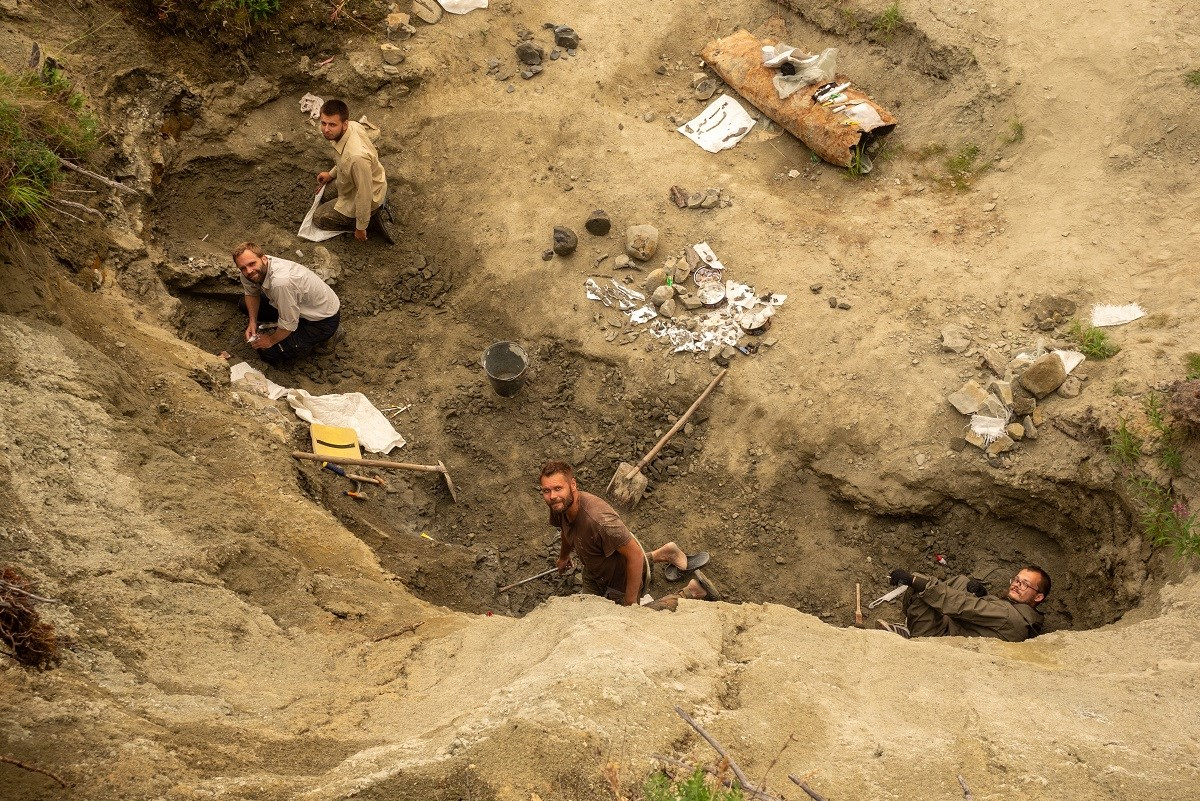A home for dinosaurs – how to preserve their bones for the advancement of science
News of discoveries by Russian palaeontologists is constantly coming in from different parts of the country, but few people know what happens to the dinosaur bones after articles about them are published in scientific journals. Are they kept in special repositories? Or perhaps in departmental collections that are closed off to the public? Do the run-of-the-mill dinosaur lovers among us have any chance at all of someday seeing the teeth and skulls of those ancient reptiles that have been found in Russia?
Pavel Skuchas, an associate professor at St Petersburg University and Doctor of Biology, is an expert in vertebrates from the Mesozoic Era. He spoke about what fossils he has been able to find during summer expeditions, where they are being preserved and what a contemporary palaeontological collection should look like.
A big Siberian expedition
What places did St Petersburg University palaeontologists get to visit this summer?
This year, we had a big expedition in Siberia, first of all in the Kulinda Valley, which is in the Chita Region, then in Yakutia and after that in Buryatia. Each of these places is unique in its own way. Although we were in many different locales, the first place we went to was Kulinda, where we joined in with an expedition from the Institute of Natural Resources, Ecology and Cryology of the Siberian Branch of the Russian Academy of Sciences, which was led by Svetlana Reshetova, the acting head of the Laboratory of Geochemistry and Ore Genesis.
What is interesting about this place? A number of years ago, a small dinosaur was found here, and it was given the name Kulindadromeus zabaikalicus. Imprints of its ‘proto-feathers’ and scales were discovered in local sediment. It is an extraordinary situation for Russia when elements of skin integument are found. On Kulindadromeus they were indeed very unusual in structure: the tail was covered with large scales like those seen on present-day reptiles; the back, with something like tufts of hair made of threadlike feathers; and other places, with a combination of scales and thin hair filaments.
Although we have known about Kulindadromeus for some time now, we still hope to turn up new information, for instance about the anatomical structure of this dinosaur. A skull found during our expedition by St Petersburg University doctoral student Ivan Kuzmin will help in this respect. It had a head with a circumference of ten centimetres, which was embedded in rock, and, interestingly enough, the bones themselves had not been preserved, only their three-dimensional mould. As it turns out, there had earlier been strong volcanic activity here, on the order of Pompeii, and it had incinerated everything. As a result, all that was left of the bones was their contours, which were, however, sufficiently distinct.
What interesting things did you learn from your expedition in Yakutia?
I must say that the Yakut expeditions are some of the most complicated ones. Every year there’s some sort of surprise waiting for us there: in 2017, it was copper pipes, so we had to make our way through the taiga in an off-road vehicle; in 2018, it was water, as we were constantly being inundated; this year, it was fire, since there were wildfires raging all around us. At first, they didn’t even want to let us onto the site, but then we were able to get special authorisation. But we were forced to work in heavy smoke, which sometimes blocked out the sun, and it seemed as if dusk had fallen.
Even so, we did make some finds: we collected a fair number of dinosaur bones, which we are now cleaning and analysing. Soon we will have updated information about the stegosaurus, a herbivorous dinosaur with plates on its back and tail. Besides that, we found some large platelets from the shell of a prehistoric turtle and were able to confirm our hypotheses that the polar dinosaur fauna was rather primitive and that many of its members were ‘living fossils’ of their day, just like those that lived in West Siberia, by the way. These two faunas were very similar.
How many days in all were you on expedition this year?
Counting the third trip to Lake Gusinoye in Buryatia, it came to about two months. By the way, the last expedition was the longest. We went there with some students and found several teeth belonging to members of one of the largest groups of herbivorous dinosaurs, the sauropods. We also found the shell of a turtle known to have lived in these regions.
A palaeontological zoo
So, where will the dinosaur fossils that you have found be kept?
The fossils from the Chita Region will be at the Institute of Natural Resources, Ecology and Cryology of the Siberian Branch of the Russian Academy of Sciences. Fortunately, our colleagues have given us a chance to work with these bones over the next year, so for now they are at our department. Some of the Yakutia finds are still there, and the rest, along with those from Buryatia, have been sent to the Zoological Institute of the Russian Academy of Sciences, which is in St Petersburg.
Why not to St Petersburg University?
Unfortunately, the University has no special storage facility for palaeontological collections. The basic requirement of a research collection – and it is absolutely inviolable – is that it be available. When you publish a scientific paper about dinosaurs, you must include in it the numbers of the samples and let it be known where they are being housed. This rule makes sure that any scientist from any country in the world can come and acquaint themselves with the materials.
What, in your opinion, should a contemporary palaeontological collection look like?
Such a collection should have a special storage facility, a curator and a preparation room – a place where samples can be cleaned – and it should be constantly expanding. I am also convinced that any such centre should fulfill an educational function, by holding exhibitions, seminars and lectures that are open to the general public. People often ask how palaeontologists extract fossils from sedimentary rocks. Well, here’s an excellent idea – you can make one of the walls of a preparation room out of glass, so that visitors to the museum can observe how palaeontologists actually work. This is how it’s done in many museums throughout the world, and next to the glass there is usually an amusing sign: ‘Palaeontologists at work. Please do not disturb or feed them.’
What do such research centres look like abroad?
The well-known Canadian palaeontologist Philip Currie has opened a wonderful private museum. It’s a contemporary building, where there is a lecture hall, a food court, toilets, a visual-aid room, a palaeontological laboratory, a storage facility and two large exhibition galleries – one with fish fossils from the Devonian Era and the other with dinosaurs from the Cretaceous Period. This is a perfect example of what we could do here. By the way, this is how palaeontological collections are usually arranged in the world’s largest university museums – the Oxford Museum of Natural History, Harvard, the University of Utah, Yale University and many others.
I can imagine that palaeontology lovers would be tickled to see such a collection, but why do scholars need one?
When a university has got a storage facility for research collections and a place for researchers to work, palaeontologists from all over the world come to the school. It’s both convenient and interesting for them to carry out research there. And if there are resource centres with special equipment nearby where they can work with an electron microscope or a tomographic scanner, then the value of such a centre increases manyfold. For another thing, it’s important to emphasise that the centre should be staffed with researchers who don’t just give tours but who also write papers, do research, win grants and go on expeditions. That’s the only way it will grow and develop.
Today, vertebrate palaeontology is undergoing yet another renaissance. Here at the University, we already have more than ten students who are seriously involved in this field. If they are truly interested, then we need to have jobs for them. It seems to me that, aside from working in the department, these young researchers could also work at such a museum. They could give classes to children, deliver lectures and help build up the collection. It would be a fantastic opportunity.



